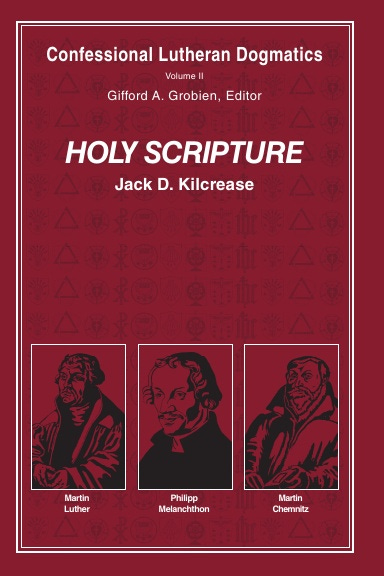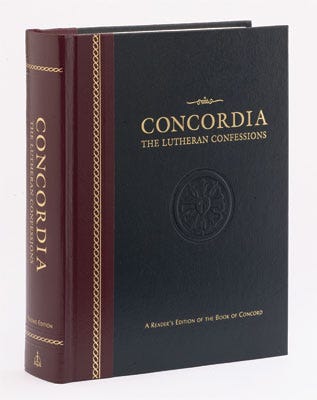A Second Friendly Critique of Barr's The Making of Biblical Womanhood
Part III of our Epic Review
Making of Biblical Womanhood presents several convincing historical arguments that deconstruct the assumed uniformity of biblical womanhood throughout the church’s history, but Barr falters when attempting to address modern controversies of the twentieth century. Barr’s conclusion that the doctrine of biblical inerrancy “became important because it provided a way to push women out of the pulpit” may well be true.1 Barr does show evidence of correlation. But she did not present enough evidence to convince us that this was in fact a case of causation, that inerrancy became important primarily because it served as a helpful item in the patriarchal toolkit and not merely that promotion of inerrancy and the solidification of “biblical womanhood” among evangelicals happened to occur around the same time. We suspect Barr is correct, but we would have liked to have seen more evidence.
Additionally, Barr’s argument regarding inerrancy is built around an insufficiently nuanced doctrine of inerrancy. One way to think about the doctrine of inerrancy is to make it the foundation of one’s belief system. This is common among both fundamentalists and evangelicals. According to this line of thinking, Christians believe in the Bible because it is inerrant. Since the Bible is inerrant, Christians believe everything it says about Jesus and can trust Him. Therefore, if inerrancy is undermined, by, for example, questioning Paul’s directives regarding women, all of Christianity comes crashing down. A better, and we would argue more biblical, approach is to begin with Christ. We believe in Christ’s resurrection from the dead. His divine authority then leads us to trust His authorized Scriptures completely.2 In this way, inerrancy flows from belief in Christ, rather than belief in Christ resting precariously on inerrancy.

Unfortunately, this dismissal of inerrancy as a tool of the patriarchy leaves Barr vulnerable to the argument that she rejects complementarianism because she rejects the authority of Scripture, which would be an unfair characterization of her work. In an earlier chapter, for example, she invites the reader to reexamine Paul’s writing on women by way of cultural and historical context, whereas someone less committed to the veracity of Scripture might either argue for non-Pauline authorship or blatant rejection of difficult passages. However, despite her problematic approach to inerrancy, Barr’s broader point that inerrancy has been weaponized against women has validity. Indeed, literalist readings of 1 Timothy 2:12 and 1 Corinthians 14 are often used a litmus test for biblical faithfulness, whereas other Pauline texts that are not directed specifically at women rarely receive the same sort of rigid application.
Barr also argues that late-twentieth century “evangelicals resurrected Arianism for the same reason that evangelicals turned to inerrancy: if Jesus is eternally subordinate to God the Father, women’s subordination becomes much easier to justify. Arianism, like inerrancy, proved the perfect weapon against women’s equality, the perfect prop for Christian patriarchy.”3

For those familiar with the debate, Barr’s claim is obviously true, but some quotations from prominent evangelical leaders or other evidence would have strengthened her case.4 It is true that some evangelicals embraced subordinationism in response to the development of Second Wave Feminism after the 1960s. In fact, Gregory Lockwood notes in an excursus on the ordination of women that during the 1990s C. Volz charged some Lutheran theologians with a “new exegesis of 1 Cor 15:28 … identical with that of the Arians in 357 A.D.” as a result of their efforts to argue against ordaining women.5 But versions of subordinationalism also existed in Protestant circles prior to the mid-twentieth century among the likes of Baptist theologian Augustus H. Strong.6 It’s also worth noting that subordinationalism, although also a heresy, is not the same thing is “pure” Arianism and Barr seems to conflate the two.
In any case, as we are sure Barr would agree, unorthodox teachings can and in fact have become deeply entrenched within the church to the point of becoming de facto “orthodoxy.” In fact, this is her entire argument in a nutshell, that “biblical womanhood” is one of those unorthodox teachings that has, unfortunately, become so widespread within evangelicalism as to assume the false mantle of “orthodoxy.” This all begs the question of how one can determine which historical actions and beliefs are orthodox and which are not. As Lutherans adhering to the inerrant Bible as the norma normans and to the normed norm of the Confessions, we must respectfully judge the development of women’s ordination within the Church as a newly widespread unorthodox development. As a result, although we agree with much of Barr’s historical argument regarding biblical womanhood, as confessional Lutherans, we must reject some of her theological conclusions.

Nevertheless, Barr correctly describes the messaging now coming out of many quarters of conservative Lutheranism when she writes that “…women were being told that their highest calling as Christian women was to be wives and mothers – which implied that women who found meaning or calling apart from being wives and mothers were defying God’s call for them.”7 Her work is a healthy reminder that confessional Lutherans need to be just as critical about importing evangelical ideas about biblical womanhood (or manhood) as we are about importing other evangelical doctrines or worship practices. We can only hope that different beliefs regarding the doctrine of the ministry and biblical inerrancy do not prevent confessional Lutherans from reading Barr’s work and taking her historical conclusions and many of her other admonitions to heart.
[1] Barr, The Making of Biblical Womanhood, 191.
[2] See Jack D. Kilcrease, Holy Scripture, Confessional Lutheran Dogmatics, ed. Gifford Grobien (Fort Wayne, IN: The Luther Academy, 2020), 97-102.
[3] Barr, The Making of Biblical Womanhood, 195-196.
[4] See For an overview of the controversy over the eternal subordination of the Son, see Alastair Roberts’s blog series at Reformation21.org between June 16, 2016 and June 26, 2017.
[5] Dialog 35.3 (Summer 1996), 164, qtd. in Lockwood, 538.
[6] See Glenn Andrew Peoples, “Nuts and Bolts 014: Relational Subordination Within the Trinity,” Right Reason: The blog of Dr Glenn Andrew Peoples on Theology, Philosophy, and Social Issues, February 19, 2012, http://www.rightreason.org/2012/nuts-and-bolts-014-relational-subordination-within-the-trinity/.
[7] Barr, The Making of Biblical Womanhood, 78-79.
The Making of Biblical Womanhood: How the Subjugation of Women Became Gospel Truth. By Beth Allison Barr. (Grand Rapids: Brazos Press, 2021, Pp. 256. $19.99, paperback.)
Imagines without links from https://www.facebook.com/solasisters/photos/a.662878913760417/2728597883855166/; and https://www.rockingphilosophy.com/2019/07/
Re-posted with permission from the blog Jack Kilcrease: Crux sola est nostra theologia, originally posted May 10, 2021.
Still not enough Biblical Womanhood for you? Listen to Bethany and Ellie discuss the book and their confessional Lutheran perspective here!
If you can’t get enough of Beth Allison Barr’s The Making of Biblical Womanhood, then check out Bethany’s and Ellie’s interview on the podcast Doth Protest Too Much: Keeping the Reformation Alive.







I just found your blog and really appreciated this breakdown. As a Lutheran convert who grew up smothered under “biblical womanhood” I have been alarmed by what feels like the conservative lean back towards that evangelical position. I also have been completely unsatisfied by the more liberal trend towards women’s ordination as I believe it’s a matter of office and order not whether or not women are qualified to teach. But then it’s easy to feel like the only alternative to ordaining women is the literal application of Paul’s teaching into something that approximates “sit down and shut up”. Truly, thank you for this well nuanced conversation.